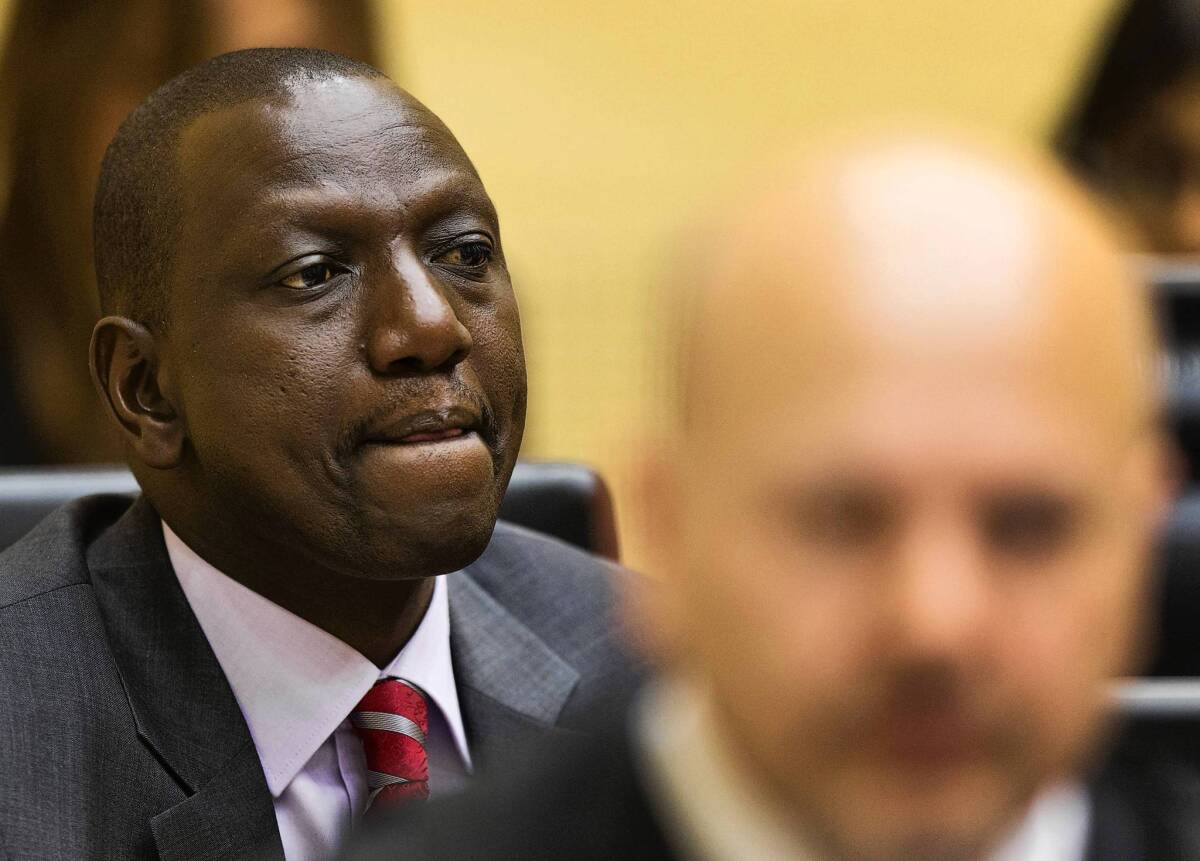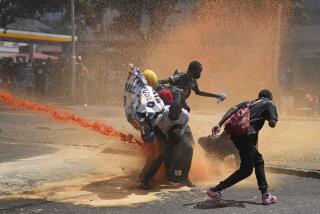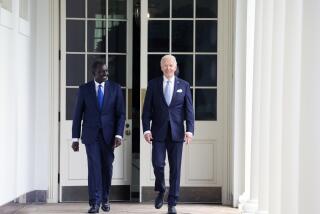First witness in Kenya leader’s ICC trial recounts 2008 church attack

JOHANNESBURG, South Africa — It was an act of utter desperation. It was 2008 and the woman had just escaped from a western Kenyan church that had been torched by a mob, where children had been burned to death. Then she watched her brother get struck in the throat by an arrow fired by an attacker with a rival ethnic group.
The woman, known only as Witness 536, testifying Tuesday against Kenyan Deputy President William Ruto at his International Criminal Court trial, said she did the only thing she could think of to save her brother.
“I took off all my clothing and there I stood, entirely naked,” she said, explaining that to the “enemies” from the Kalenjin tribe, a naked woman was “like a curse.”
This anonymous soft-spoken Kenyan woman was the first person to testify against a sitting government leader at the ICC in The Hague. Witness 536 appeared for the prosecution against Ruto in the court’s biggest test in its 11-year history, its first attempt to try a current government leader for crimes against humanity.
The woman said that after she tore her clothes off, the attackers shoved her brother toward her “and said take your trash away.”
“He was in a bad way because he took a few steps and he fell to the ground.... You see, his head and neck were nearly separated.” She managed to get him to a hospital. It was not clear from her evidence whether he survived.
After the disputed election at the end of 2007, the prosecution says, Ruto orchestrated ethnic violence and killings by thousands of young Kalenjin men, who attacked members of the Kikuyu tribe and other ethnic groups. More than 1,000 people died.
Kenyan President Uhuru Kenyatta, who, like Ruto, was elected to his current office in March, faces similar charges.
Ruto is accused of organizing a mafia-like network of politicians, military figures, tribal leaders and news media and financial figures to plan and carry out attacks in the Rift Valley. He is being tried with former radio journalist Joshua Arap Sang. Both have pleaded not guilty.
To Kenyans watching the video transmission from the court, Witness 536 appeared as nothing more than a swirl of pixilated colored squares, her identity kept secret to protect her from retribution. In the court, she testified behind a screen.
Her testimony was chilling: She spoke of Jan. 1, 2008, when several thousand men armed with machetes, axes and sticks surrounded a wooden church in the town of Kiambaa where women and children had taken refuge from postelection violence.
In an attack that was reported around the world, the men burned down the Kiambaa church, killing as many as 35 people.
Witness 536 began sobbing as she described the scene as members of the Kalenjin tribe approached from two sides. She said many had their faces painted with white clay, making it hard to recognize them.
“The enemies were coming. They were singing.... Some of them were wearing leaves, others had pieces of cloth on their faces. Others were bearing traditional weapons such as machetes and axes and sticks.... They were Kalenjin,” she said, explaining that she heard them use Kalenjin expressions and recognized several of them.
“The church was full.... There were stones being thrown and arrows being thrown at the windows from all sides,” she said.
The witness said she saw one man whose face was visible, whom she identified as Stephen Chemalan, holding a blue gasoline can. He poured gasoline on the roof and set it on fire, she said. The attackers piled bicycles against the main entrance to prevent people from escaping, while Kalenjin youths guarded a smaller door.
At one point, she testified, one of the mob’s leaders ordered the others to let the women and children out, and she escaped. But a short time later she heard that children had been forced back into the church to burn.
“When I left the church and when I was told the children had been put back in I just became mad, as if I was mad,” she said, sobbing. She said she saw a woman named Margaret Wanjiru being attacked. “It was the first time in my life that I’d seen a rape happen.”
The witness said she saw an elder, Baba Shelagu, summoned by the Kalenjin youths. “That person was struck with an ax, and I lost it basically.” He was killed.
The testimony, the first by a victim of one of the worst massacres in the postelection violence, has the potential to turn the tables on ICC critics, notably Kenyan and other African leaders. They accuse the court of being anti-African because all its cases involve defendants from the continent. Human rights advocates counter that the court is investigating abuses against Africans and offers a last resort when governments fail to prosecute crimes against their people.
Kenya has called on the United Nations Security Council to halt the trials, while the African Union is planning a special meeting on the ICC in October, according to Kenyan media reports. African leaders are also expected to bring the issue next week to the U.N. General Assembly, which Kenyatta reportedly will attend.
Key witnesses in the case against Ruto have withdrawn, and ICC chief prosecutor Fatou Bensouda has complained of interference and threats against witnesses. Four witnesses withdrew just before the trial, and several more have reportedly pulled out in recent days, prompting speculation that the prosecution’s case could be undermined.
Bensouda, who is from Gambia, said last week that the prosecution was investigating cases of witnesses being bribed to withdraw, warning of tough penalties.
Kenyan news reports suggest that some witnesses have been under intense family and community pressure to pull out of the trial, which is severely embarrassing for Kenya’s government.
At the time of the violence, Kenyatta and Ruto were opposite sides of the political and ethnic divide. They formed an alliance before this year’s election, leaving a nation divided over the spectacle of its president and deputy president facing trials.
The case against Ruto continues. Kenyatta’s trial is to begin in November.
More to Read
Sign up for Essential California
The most important California stories and recommendations in your inbox every morning.
You may occasionally receive promotional content from the Los Angeles Times.










